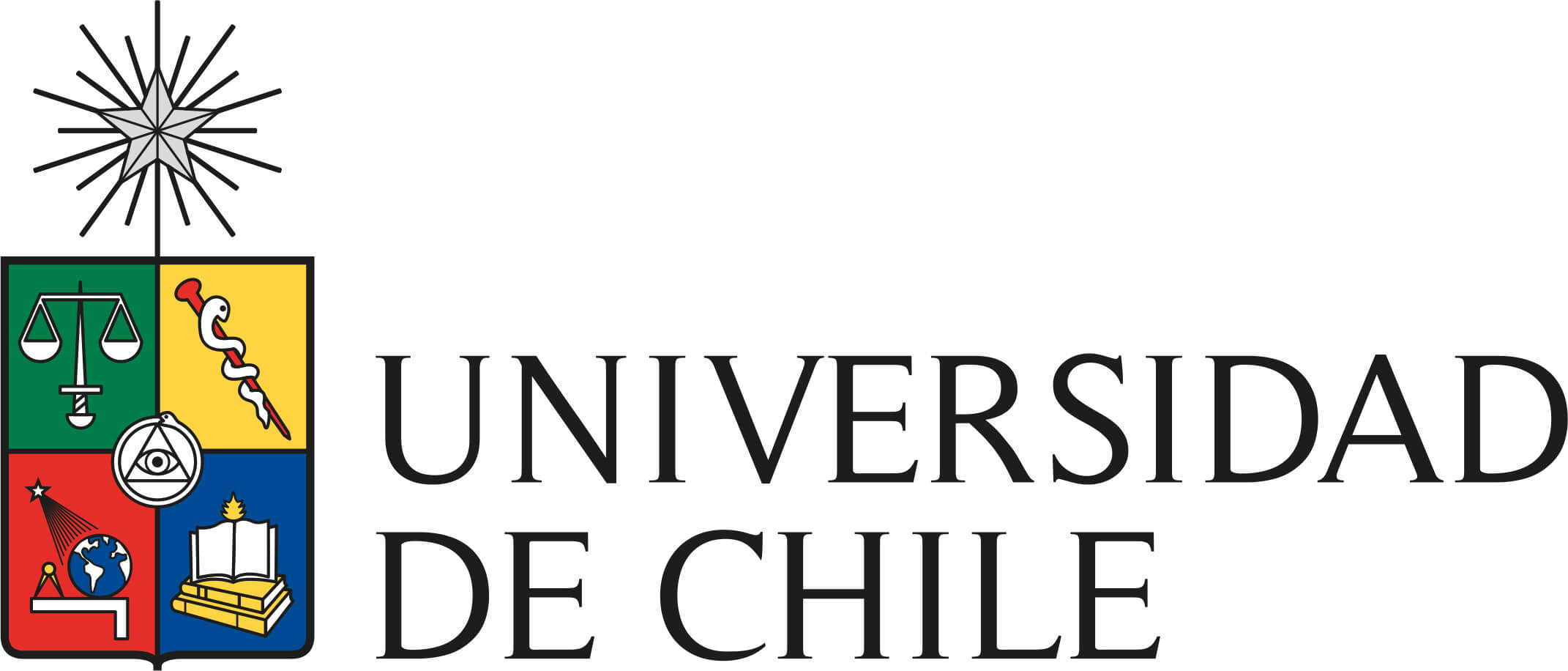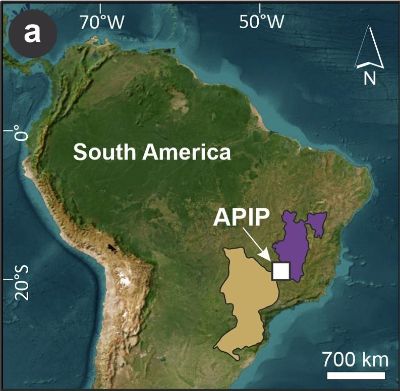Revisa la versión en español de este artículo.
The Earth's mantle is the main source of niobium ore deposits. This is one of the conclusions of a doctoral research led by Universidad de Chile and carried out as an international collaboration between scientific institutions from Chile, United Kingdom and Brazil. Niobium (Nb) is the 41st element of the periodic table and a key mineral for energy transition.
The research, developed over the last five years, focused on the niobium mines of the Alto Paranaíba Igneous Province (APIP), located in Brazil. About 90% of the global production of this metal comes from this region of the planet.
The results, published in high-impact scientific journals, could have great repercussions on the mining and exploration of niobium and, consequently, on the progress towards technological solutions to reduce dependence on fossil fuels. Niobium is highly valued for its high resistance to temperature and corrosion, which makes it a perfect ingredient in the construction of high-speed trains, MRI equipments and particle accelerators, among others.
"Understanding how niobium is transported on a geological scale and how it is deposited in the Earth's crust is key to knowing, later, where to look for it", says Dr. Felipe Velásquez, lead author of this doctoral project.
Main findings
In general terms, geologist have scarce information regarding the geological events that trigger the formation of this kind of deposits, which forces exploration companies to search for these resources with insufficient and little information.
In this context, and using geochemistry techniques to understand the geological history of niobium, Dr. Velásquez and his research group (sponsored by the Director of the Department of Geology U. de Chile, Dr. Martin Reich) analyzed the sources and mechanisms that led to this mineral to lodge in the Brazilian basin.
In two years, Dr. Velásquez published three academic papers in high-profile journals (International Geology Review, 2022; Geochimica et Cosmochimica Acta, 2024 and Journal of Geochemical Exploration, 2024), whose conclusions are presented below:
- The first paper (2022) addressed the geochemical evolution of mantle-derived rocks and their impact on the formation of pyrochlore-rich carbonatites in the upper crust, suggesting a solid evidence of a geochemical link between shallow and deep rocks.
- This allowed the researchers to conclude that the niobium available at APIP found its origin in the "subcontinental lithospheric mantle", more than 80 km deep, with "a primary ultrapotassic carbonated-silicate magma" which "ascends and fractionates at different crustal levels" . This process occurred, approximately, 90 million years ago.
- But beyond that, this work detected a series of "magnetic anomalies" south of the APIP, which could be a hint for possible niobium deposits not discovered to date.
- The second work (2024), detected that the niobium mineral of the surface has a magmatic origin (magma enriched) and not hydrothermal (water enriched), a key difference for the exploration industry.
- Magma is denser than water, which makes it difficult to infiltrate the rock layers. This condition ends up confining the mineralized bodies in small geographical areas, comparing to hydrothermal deposits.
- "This information is important for geologists dedicated to exploration, because the discovery of magmatic niobium minerals could help to reduce and limit the search areas, which can lead to savings in prospecting campaigns," says Dr. Velásquez.
- And finally, the third work (2024), proposed to "characterize the carbothermal alternation", which allows us to conclude that niobium continues to be igneous, while the rocks surrounding the igneous body altered and changed to a chemistry richer in potassium and CO2.
Influence of the mantle on the Earth's crust
All the tectonic processes of the Earth's crust, from the formation of mountains to the ocean seabeds and mineral deposits, are explained by the activity of the mantle.
There is broad scientific consensus regarding the role of the mantle in the formation of mineral deposits in the Earth's crust, with evidence detected in gold deposits in the Argentinian Patagonia, chromium and vanadium mines in South Africa and diamond deposits in Russia.
However, given its enormous depths (6 km under the ocean seabed and at least 33 km under continental landmasses), the exploration of the mantle represents a huge technical challenge. Most of the research is carried out using undirect methods, studying mantle rocks in the surface of the Earth dragged in by volcanic activity (such as those available in Patagonia, Spain, Morocco, France, Japan and Hawaii), or by geophysical means, using electromagnetic pulses to collect and interpret the data from the depths.
Between the 1950s and 1970s, the United States and the Soviet Union started the first serious attempts to reach the mantle through direct methods, drilling the surface. Both efforts ended due the enormous costs and difficulties of the task.
The Department of Geology - U. de Chile has developed vast experience studying and analyzing the influence of the mantle on the formation of mineral deposits on the surface of our planet, working along with geologists from other Chilean universities:
- Dr. Martin Reich (U. de Chile), Dr. Fernando Barra (U. de Chile), Dr. Santiago Tassara (U. de O'higgins) and Dr. Irene del Real (U. Austral), among others, are part of this group.
- To deepen this knowledge, Dr. María Isabel Varas-Reus, joined the Department of Geology - U. de Chile in March 2024.
About Dr. Felipe Velásquez
Felipe Velásquez is a Geological Engineer from Universidad Nacional de Colombia (2013), Master in Geology from Universidade de Brasília (2017) and joined the Department of Geology - U. de Chile in 2019 as a doctoral student.
In January, 2024, Dr. Velásquez obtained his PhD in Geology from Universidad de Chile. During his research, Dr. Velásquez gained experience in the gold and silver exploration industry in Colombia, his mother country.
Curiosities of niobium
- Worldwide, the main producers are Brazil (90%) and Canada (7%).
- Has chemical properties very similar to tantalum (Ta) and is named after Niobe, daughter of the demigod Tantalus in Greek mythology.
- Is a chemical element with a silvery appearance and very resistant to corrosion, thanks to a layer of oxide on its surface.
- Is a chemical element, number 41 on the periodic table, meaning it has 41 protons orbiting its nucleus.
- On its journey through the depths of the Earth, niobium interacts with other chemical elements, forming links (molecules) which ultimately form crystalline agglomerations (minerals).
- Is found in high concentrations in minerals such as pyrochlore and columbite.
- The main niobium mineral is pyrochlore, which is precisely the one found in Brazil, the world's main producer.


